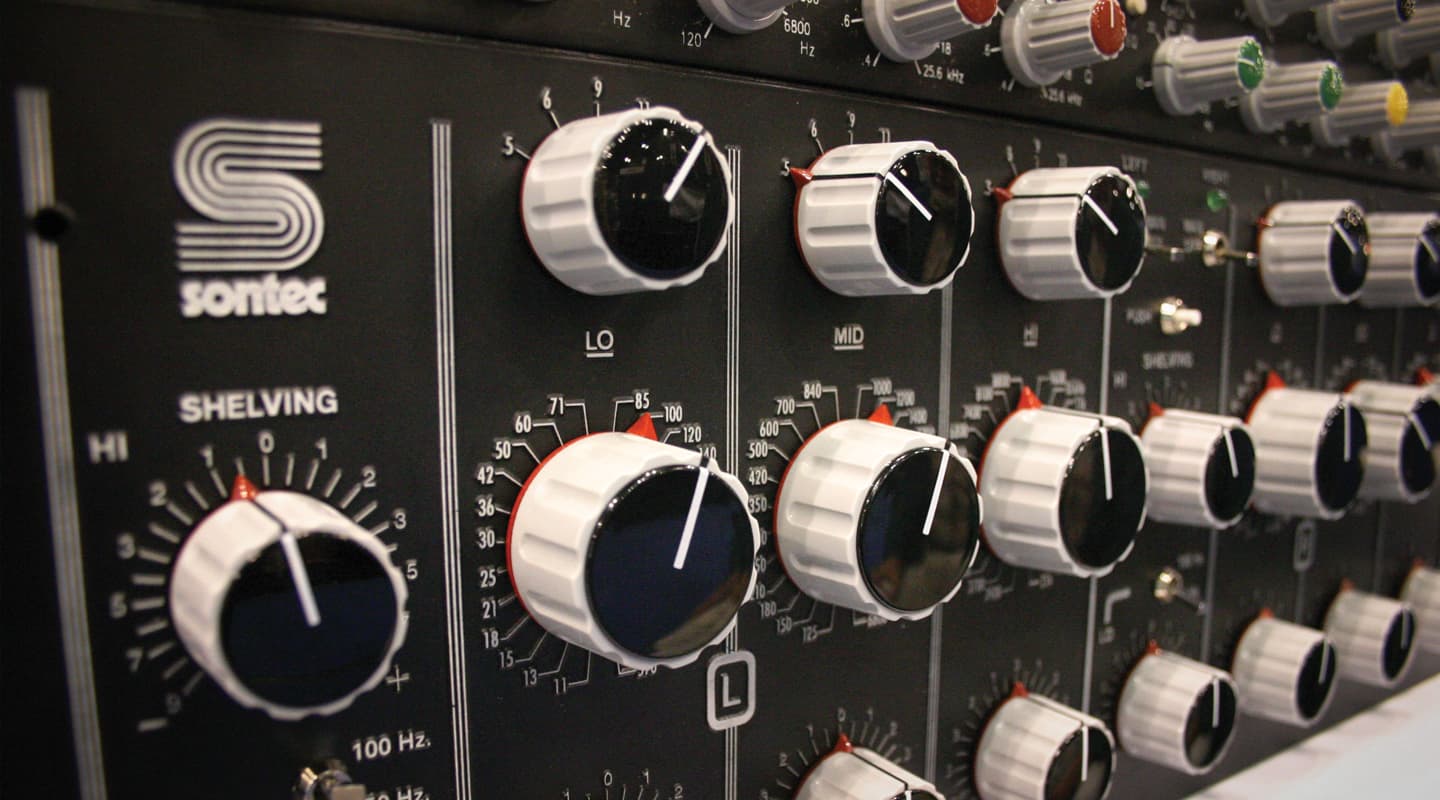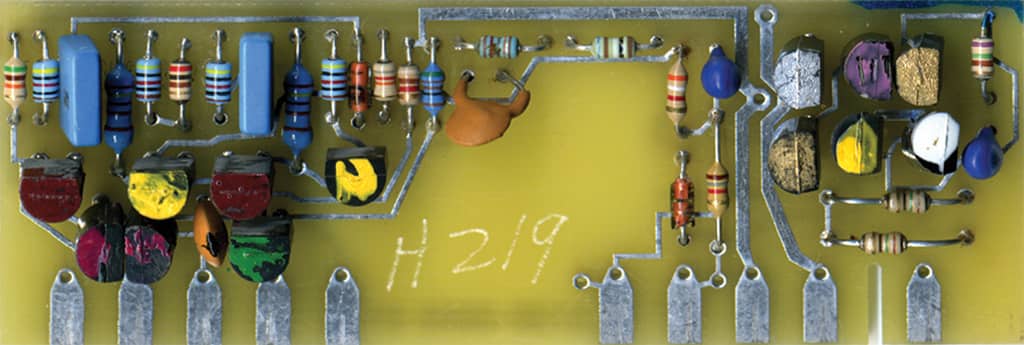
ITI AUDIO MES-432C/9
It’s back to the future for this iconic equaliser. Adam McElnea takes delivery of the Mastering Equalizer and puts it straight to work.
Review: Adam McElnea
It was over 35 years ago (1972) when the first ITI MES-430 Parametric Disk Mastering Equalizer appeared on the scene. Manufactured as a tool to assist ‘cutting engineers’ (you remember those guys, they cut the masters that were used to press weird-looking flat black round disks back in the day, called records), the stepped ITI provided uncompromised and recallable precision EQ, which set a precedent for all future parametric Mastering EQ designs. It’s not surprising to note that most of the control characteristics of the MES-430 were optimised based on the experiences of Sontec/ITI’s own in-house cutting engineers at the time, and these remain unchanged to this day. (If you’re interested in finding out more about the history of ITI Audio, Sontec and Burgess Macneal, refer to Andy Stewart’s interview with Burgess in Issue 61.)
SEXY BEAST
Since the 430 series, there have been several revisions to the Mastering Equalizer but physically the ITI unit remains virtually unchanged. Housed in a 4U-high case, boasting a heavy-duty, deep-etched front panel, furnished with some of the ‘sexiest’ large control knobs ever to grace an EQ, the MES-432 looks the biz! It’s not surprising that some of my other so-called ‘high-end’ pieces seem to pale in comparison. Visually at least, beside a Mastering Sontec there really isn’t much else that measures up in the EQ department in terms of ergonomics or aesthetics. But I digress…
The ITI Audio MES-432 supports the philosophy that if it ain’t broke, don’t fix it. Shallco switches are used throughout, boasting zero switch failure figures for over 15 years! With a low-torque, positive detent action, the tactile response of this knob/switch combination is extremely reassuring.
MASTERFUL LAYOUT
The front panel layout is a simple two-channel (L+R) affair, featuring three parametric bands and two bi-frequency fixed shelves per channel. There are no input or output channel controls nor individual band bypass switches. Channels can be switched in or out individually. All operating controls are intuitively arranged with switch positions clearly designated at all frequency points. There are 72 frequency positions divided into three overlapping ranges: 11 – 570Hz, 125Hz – 6.8kHz and 3.4 – 25kHz. Q controls vary between a broad 5 to a much tighter 15dB per octave, while frequency boost or cut comes stepped in either 0.5 or 1dB increments, depending upon which model you order. For example, the MES 432/C6 is a ±6dB version arranged in 0.5dB steps, the MES432/C is a ±12dB version in 1dB steps, while the version under review here, the MES 432C/9, offers ±9dB divided into 0.5dB steps for the first ±3dB, and 1dB thereafter. The low shelf is fixed at either 50 or 100Hz (switchable), while the high shelf is now switchable between 7 and 12kHz – previous models of the 430/432 were all fixed at 10kHz only.
Internally, the new MES-432 has gone through some re-engineering and upgrades as a result of better quality parts becoming available (and/or unavailable). ‘But will this affect that legendary Sontec/ITI sound?’ I hear you scream! ‘No,’ stresses the manufacturer. The long-out-of-production transistors that give the Sontec its highly regarded sonic mojo are still used in this new line. An interesting addition to the new ITI MES series is its ability to be modified to include an optional ‘DUO’ modular system. The DUO facility provides end users with two completely different audio signatures behind one set of controls. For extra warmth and colour, users can now include a set of vintage designed ITI amplifiers and electronics inside their Sontec unit or vice versa. Looking for smooth and transparent? Click in the ‘Sontec’ electronics. Meanwhile, if a bit more warmth and distortion are more your thing, switch across to the ‘ITI’ flavour to really hear it work… or so I’m told. Unfortunately, the review unit came as a standard Sontec configuration without the DUO functionality in place, so no testing could be done on this.
NEED TO KNOW

SHINY AS A DELOREAN & JUST AS FAST…
After setting up the unit in the rack and patching it through the console, it was time to turn her over and have a listen to the engine. First impression: subtle but nice. I must admit the unit doesn’t evoke obvious colour and vibe. For that, you’ll have to look elsewhere, or optionally, order the unit with the mojo-driven ITI electronics if this is your brief. In fact, new users of the Sontec EQ have been known to question its functionality due to the subtlety of its sound. Upon closer listening, however, you do begin to notice a little something ‘special’ imparted across the audio signal. The more you use it, the more you start to hear that sweet Sontec sound. It’s musical without being noticeably coloured or warm. Nothing seems out of place across the EQ bands. Even wrong frequency selections seem to sound good.
Some words to describe the sound: focused, detailed, fast, immediate and extremely natural. On electronic music and hip-hop especially, the 432 shines. Half a dB or so at 50Hz adds weight without artefacts; one dB at 16 or 25kHz brings out the tops without any harshness at all. In fact, the unit’s top end is very special. Even large boosts in the top end still sound ultra sweet with no compromises. On rock and acoustic projects, the precise mid bands sound focused and the imaging is ultra clean. Transients are retained nicely with minimal phase shift. Although subtle, this is a stellar sounding box with precise controls and layout.
It’s clear why these units have become a staple in some of the world’s finest mastering houses. They seem to impart an expensive natural sheen across the mix without really getting in the way. But why limit this lovely box to mastering duties? The MES-432 would also be right at home across the mix bus or even on individual tracks.
THE FUTURE SOUNDS BETTER
Often emulated but never really duplicated, the ITI MES-432 Parametric Mastering Equalizer floats on top of a crowded sea of boutique designs and ‘me too’ companies. With vintage units fetching up to a hefty US$15,000 on the used market, and with over three decades of design evolution comfortably tucked away, the new MES series may just well be the holy grail of parametric equalisers.
















The recent development in multimedia technology such as audio technology needs high quality audio system. Especially, Real Audio Technology is to be developed to play realistic sound. To meet this demands, researches on 3-Dimensional Audio which provides realistic audio effect in virtual reality and augmented reality are conducted. In this paper, how to provide realistic audio effect by using better audio technologies in augmented reality was investigated. In the study, the movements of the 3-Dimensional model on the markers were used to provide the sense of reality in virtual and real world. Namely, the sound was modified according to the movement of the model. The change in distance and angle of the model affected the sound volume and the pitch.
Cool 😎
I still waiting for him..